The strong force keeps also the protons together in the nucleus, despite their mutual
electrostatic repulsion.
Contemporary Physics Education Project
The Nuclear Force
The protons in the nucleus of an atom are positively charged. If protons
interact, they are usually pushed apart by the electromagnetic force. (Remember, opposite charges attract, but like charges repel!). However, when two or more nuclei come VERY close together, the nuclear force comes into play. The nuclear force is a hundred times stronger than the electromagnetic force so the nuclear force may be able to "glue" the nuclei together so fusion can happen.
The nuclear force is also known as the strong force.
This is one of the four fundamental forces in the Universe.
The nuclear force keeps together the most basic of
elementary particles, the
quarks. Quarks combine together to form the protons and neutrons in the atomic nucleus.
You might also be interested in:
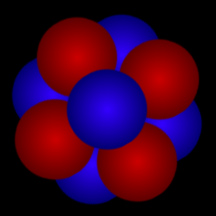
Atoms are composed of a massive, central nucleus surrounded by a swarm of fast-moving electrons. The nucleus is made up of protons and, in most cases, neutrons. Almost all of the mass (more than 99%) of
...more
A neutron is a sub-atomic (meaning it is smaller than an atom) particle. The nucleus of an atom is made up of neutrons and protons. Neutrons and protons are almost exactly the same size (a neutron has
...more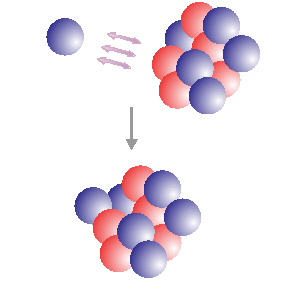
Neutron capture can occur when a neutron approaches a nucleus close enough for nuclear forces to be effective. The neutron is captured and forms a heavier isotope of the capturing element. When the new
...more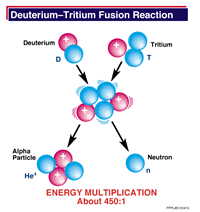
Nuclear fusion is a process where two or more nuclei combine to form an element with a higher atomic number (more protons in the nucleus). Fusion is the reverse process of nuclear fission. Fusion reactions
...more
The protons in the nucleus of an atom are positively charged. If protons interact, they are usually pushed apart by the electromagnetic force. (Remember, opposite charges attract, but like charges repel!).
...more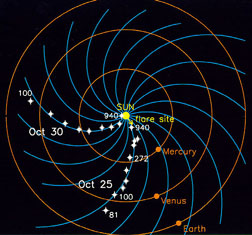
IMF stands for Interplanetary Magnetic Field. It is another name for the Sun's magnetic field. The Sun's magnetic field is huge! It goes beyond any of the planets. The Sun's magnetic field got its name
...more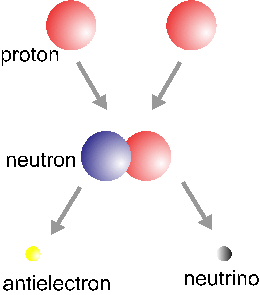
In the basic Hydrogen fusion cycle, four Hydrogen nuclei (protons) come together to make a Helium nucleus. This is the simple version of the story. There are actually electrons, neutrinos and photons involved
...more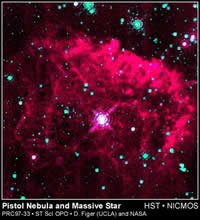
Fusion in the core of stars is reached when the density and temperature are high enough. There are different fusion cycles that occur in different phases of the life of a star. These different cycles make
...more













